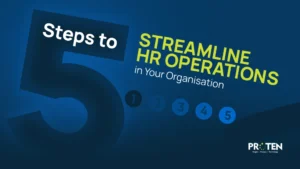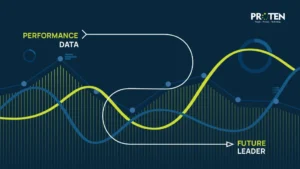Every team has that one employee who isn’t hitting the mark.
Those types of employees who miss deadlines, produce half-done work, or just lack initiative. But most times, underperformance isn’t just about laziness or lack of talent, it can be a signal that something deeper is off.
It is possible that the expectations aren’t clear. Maybe they’re struggling with a skill gap, low morale, or even possibly burnout, because research shows that only about 17% of Nigerian employees are highly engaged at work, which means most people are either disconnected or unsure how their work fits into the bigger picture.
However, whatever the reason is, writing someone off too quickly only hurts the team in the long run because helping an underperforming employee improve takes patience, structure, and the right approach.
This guide breaks down how to identify what’s causing the problem, have honest conversations, and put the right systems in place to help them perform better.
Understanding Why Employees Underperform
When someone isn’t meeting expectations, it’s easy to assume they’re not trying hard enough. But underperformance usually has layers. Most times, it’s about what’s getting in the way of it.
Some employees struggle because they don’t fully understand what’s expected of them. Others have the drive but lack the skills or tools to get the job done. And sometimes, it’s personal. Stress, burnout, or challenges outside work can quietly drag performance down. A 2020 report found that 64% of Nigerian employees are at risk of burnout or severe mental stress.
With this being said, these are some common reasons employees underperform:
- Unclear goals or expectations: employees can’t hit targets they don’t fully understand.
- Skill or knowledge gaps: In this case, training or mentoring might be missing.
- Low motivation: This often happens when effort goes unnoticed or work feels meaningless.
- Poor management or communication: Inconsistent feedback leaves employees unsure of where they stand.
- Personal issues: Health, financial pressure, or family challenges can affect focus and consistency.
Understanding the why helps managers respond with empathy instead of frustration. Once the root cause is clear, it’s easier to figure out whether the employee needs support, guidance, or accountability.
How to Identify an Underperforming Employee Early

Performance issues rarely happen all at once. They creep in quietly.
It often starts with something small, like a few missed details here and there. Then deadlines start slipping. Maybe the person who used to speak up in meetings now keeps to themselves. Their energy changes, but it’s subtle enough to miss if you’re not looking.
Soon, the patterns become harder to ignore. Their reports aren’t as sharp as they used to be, or teammates begin covering for them, and the quality of work dips a little each week. You might even notice them showing up late more often, or zoning out during discussions.
Individually, these things might not mean much. But together, they paint a clear picture that the employee is struggling.
That’s why early detection matters. The best managers don’t wait for performance reviews to notice problems. They pay attention in the in-between moments, the quick check-ins, the casual “how’s it going?” chats that often reveal more than any report ever could.
Read this blog to learn more about: How to Boost Productivity and Retention with Employee Engagement
How to Talk to an Underperforming Employee

As a manager, these types of conversations are never fun.
Telling someone their performance has dropped can feel awkward, even uncomfortable. But silence does more harm than honesty. And the key is to approach it with clarity and empathy.
To handle this, you have to start with facts, not feelings.
Focus on what you’ve observed, whether it is the missed targets, the slower turnaround, or the feedback from colleagues.
You must avoid vague statements like “you need to do better.” Be specific about what’s off and why it matters.
Then, make it a dialogue, not a lecture. Ask questions that open the floor:
- “What’s been challenging for you lately?”
- “Is there something getting in the way of your work?”
- “How can I support you to turn this around?”
Sometimes you’ll uncover reasons you didn’t expect, whether it is confusion about priorities, workload imbalance, or personal stress. Listening without judgment helps you get the full picture and shows the employee you’re invested in their success.
Then, when you’re done, wrap up the conversation with a shared plan. Clarify what improvement looks like and what steps will follow. Keep the tone firm but fair because you’re not scolding, but you’re partnering to solve a problem.
Handled well, this kind of convo doesn’t just fix performance. It builds trust.
Setting Clear and Achievable Performance Goals

Once you’ve talked through the issue, the next question is what happens next? Most employees want to improve; however, they just need a clear path to follow. That’s where goal-setting comes in.
Start by defining what exactly needs to change. Avoid general feedback like “you need to step up.” Instead, point to a specific area. For example:
“Your reports have been coming in late over the past month. Let’s aim to have them submitted by Wednesday each week so the finance team can review them on time.”
That one line gives direction, a timeline, and a reason. It shifts the focus from blame to action.
To make sure goals stick, use the SMART framework:
- Specific: Don’t say “be more proactive.” Say, “Take ownership of at least one new client task each week.”
- Measurable: Add numbers where possible. “Increase customer satisfaction ratings from 70% to 85% within the next quarter.”
- Achievable: Keep it realistic. If someone is struggling to meet three deadlines, don’t assign five.
- Relevant: Align goals with team or company priorities. “Improve response time” makes more sense if the team’s target is faster service delivery.
- Time-bound: Set a review date. “Let’s meet again in six weeks to see how this is going.”
Involve the employee in creating these goals. Ask what they think is reasonable and what support they might need, be it extra training, clearer processes, or fewer conflicting tasks. When people help shape their own plan, they’re more likely to follow through.
Finally, put everything in writing. It doesn’t have to be formal, it could be an email recap or a shared document that works. This keeps both sides aligned and makes progress easier to measure later.
Coaching and Development Plans That Drive Improvement

Setting goals is one thing. Helping someone reach them is another. Coaching bridges that gap. It’s what turns a performance plan from a checklist into actual progress.
You should start by figuring out what kind of support the employee needs. If the issue is skill-based, training might help. For example, if a sales rep struggles with closing deals, pair them with a top performer for shadow sessions or role-play client calls once a week. If it’s about focus or consistency, short weekly check-ins can keep them accountable and supported at the same time.
Coaching isn’t about constant supervision. It’s about you guiding and giving feedback in real time. Instead of waiting for the next performance review, say things like,
“That presentation was clearer than last week’s, your structure worked better this time. Keep that format.”
Small, specific feedback moments like that show progress is being noticed, which keeps motivation alive.
Read more about 30 Effective Employee Engagement Strategies to Implement in 2025
Tracking Progress and Measuring Improvement
Once goals and coaching plans are in place, the next step is tracking whether they’re working. Progress doesn’t always show up overnight, but it does leave clues.
Start simple. Look out for small wins, like when tasks are completed on time. These improvements might seem minor, but they show the employee is putting in the effort.
Set a review rhythm that works for both sides. This could be weekly or biweekly check-ins are enough for most roles. During these sessions, talk about what’s improved, what still feels challenging, and what support you might need to change. It doesn’t have to be formal. Even a 15-minute catch-up can make a big difference.
Whenever possible, use data. If the employee works in sales, track conversion rates. For customer service, monitor response times or satisfaction scores. In project-based roles, look at turnaround times and quality of deliverables. Measurable data helps you focus on facts instead of feelings.
If progress slows or stalls, adjust the plan. Maybe the targets were too ambitious, or maybe the employee needs more training before taking on new challenges. The goal for this should be consistent improvement.
And when things turn around, close the loop. Celebrate the change. A simple, “I’ve noticed how much more consistent you’ve been lately, it’s made a real difference,” reinforces good habits and builds confidence.
When Performance Doesn’t Improve

Even with clear goals, coaching, and consistent feedback, some employees won’t make the progress expected. When that happens, it’s important to follow a structured process rather than reacting out of frustration.
Start by reviewing everything that’s been done so far. Look at the documentation. This could be meeting notes, progress updates, and any development plans that were in place. This helps confirm that the employee was given the right level of support and clarity. It also keeps the process fair and transparent.
If performance still doesn’t improve, you may need to explore next steps such as reassignment, role restructuring, or, in some cases, separation. These decisions should always be backed by documentation and handled in line with company policy to avoid bias or misunderstanding.
Final Words…
Helping underperforming employees improve takes more than feedback and deadlines. It takes a culture where people feel guided, not judged. When expectations are clear, coaching is consistent, and progress is tracked fairly, employees don’t just perform better, but they stay engaged.
Still, for many organisations, building that structure internally can be tough. HR teams are already stretched thin managing other daily demands. That’s where Proten International steps in.
We help businesses strengthen their people systems from performance management and HR outsourcing to tailored training and development solutions. Our goal is simple: help teams perform at their best while freeing leaders to focus on strategy and growth.
If your organisation is dealing with performance gaps or needs a better structure for managing and supporting employees, Proten can help you build it.
Click this link to contact us here to learn how we can support your HR goals.











